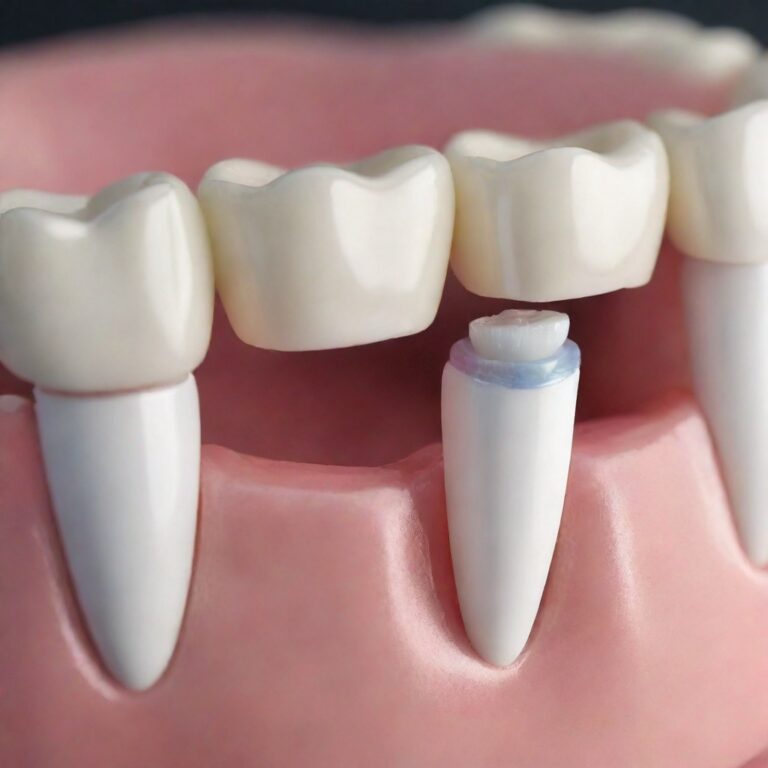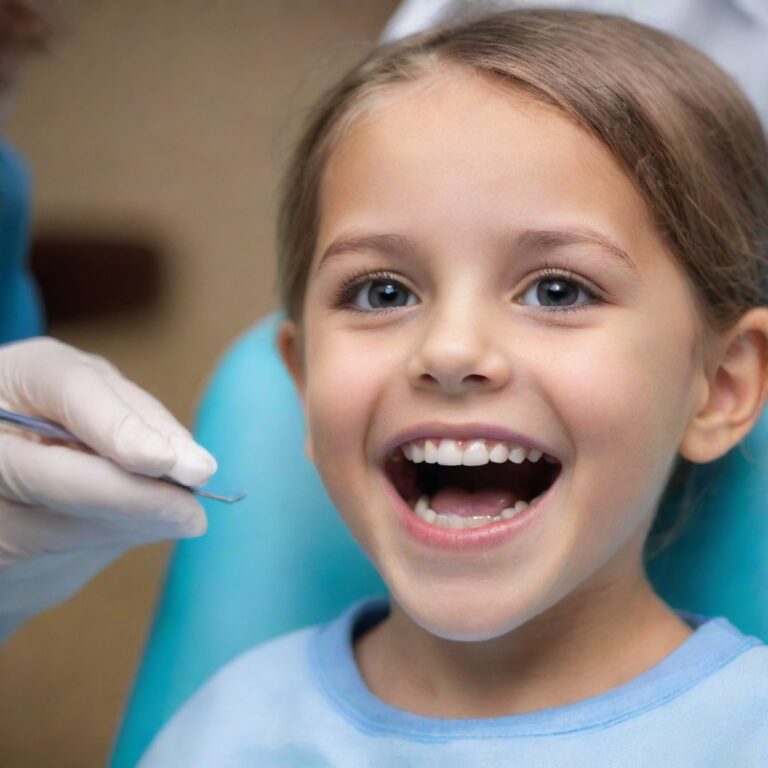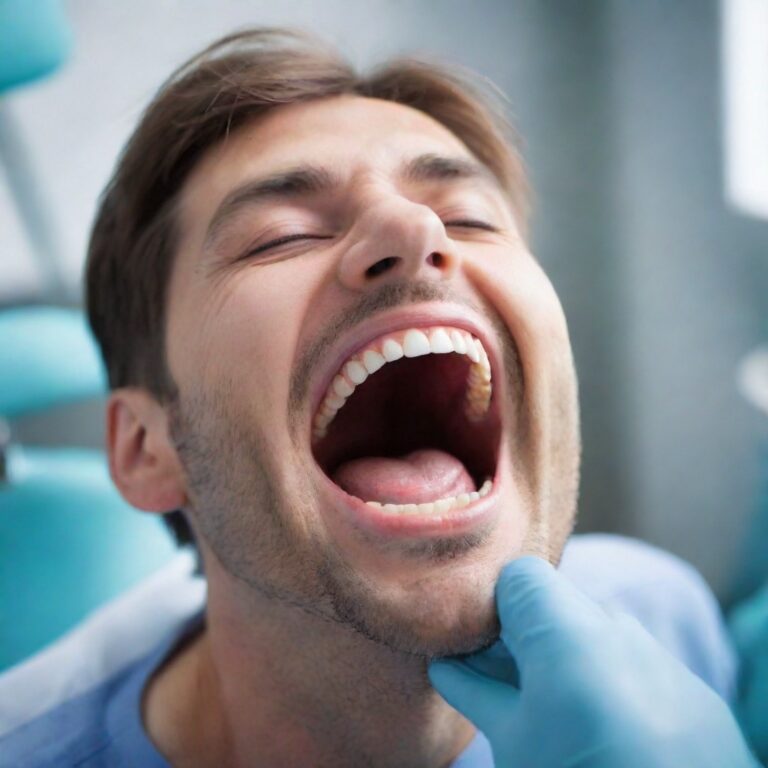Orthodontic Treatment For Teeth Alignment
Effective Orthodontic Treatments for Teeth Alignment: Options and Outcomes
Are you looking for ways to improve your smile and boost your confidence? Orthodontic treatments for teeth alignment might just be what you need. These treatments can correct various dental issues such as overcrowding, gaps, and improper bites, leading to healthier teeth and a more appealing smile. Let’s explore the effective options available in orthodontic treatments and what outcomes you can expect.
Common Types of Orthodontic Treatments
When it comes to aligning your teeth, several orthodontic options are at your disposal. Each type of treatment offers unique advantages tailored to different dental needs. Here’s a breakdown of some popular choices:
- Metal Braces: Traditional metal braces are the most common method. They consist of metal brackets and wires that gradually shift your teeth into the desired position. Metal braces are durable and effective for complex alignment issues.
- Ceramic Braces: Made of clear or tooth-colored materials, ceramic braces blend in with your teeth. They function similarly to metal braces but are less visible, making them a popular choice for teens and adults who prefer a more discreet option.
- Lingual Braces: Unlike traditional braces that are placed on the front of your teeth, lingual braces sit on the back. They are customized for each individual, offering a hidden solution for those who want to avoid visibility.
- Clear Aligners: Brands like Invisalign offer clear plastic aligners that are removable. These aligners are designed to gradually move your teeth without the noticeable appearance of braces. The convenience of being able to take them out for meals and cleaning is a significant plus.
Choosing the Right Orthodontic Treatment
Deciding on the best orthodontic treatment involves understanding your unique dental situation, preferences, and lifestyle. Here’s how you can make an informed choice:
- Consultation: Schedule a consultation with an orthodontist. They will conduct a thorough examination and may use X-rays to assess your teeth and jaw alignment.
- Expectations: Discuss your goals with your orthodontist. Do you want a quick fix, or are you looking for long-term results? Clear aligners may be faster for minor adjustments, while braces might be necessary for severe misalignments.
- Lifestyle Factors: Consider your daily routine. Clear aligners may be more convenient for those who play sports or desire a less noticeable option. On the other hand, braces might be a better fit for those with more challenging alignment issues.
Expected Outcomes of Orthodontic Treatments
One of the main reasons to pursue orthodontic treatment is the positive outcome on your smile and oral health. Here are some key benefits you can look forward to:
- Improved Aesthetics: The most obvious outcome is a more attractive smile. Proper alignment can boost your confidence and encourage you to smile more often.
- Better Oral Health: Misaligned teeth can lead to various dental problems, including tooth decay and gum disease. Straightening your teeth makes them easier to clean, reducing the risk of these issues.
- Improved Functionality: Correcting your bite can enhance how your teeth work together. This can alleviate discomfort and reduce the wear on your teeth over time.
- Long-Term Results: Once treatment is complete, a retainer can help maintain your newly aligned teeth. This commitment ensures that you enjoy the benefits of your treatment for years to come.
Embarking on orthodontic treatment is a big step towards achieving a healthier, more confident smile. Whether you choose metal braces, ceramic braces, lingual braces, or clear aligners, working closely with an orthodontist will guide you through your options. By following the advice and recommendations from your orthodontist, you can look forward to a beautiful and functional smile that enhances your overall well-being.
Your journey to teeth alignment through effective orthodontic treatments can transform your smile and improve your quality of life. Are you ready to take the first step?
The Impact of Misalignment on Oral Health and Overall Well-Being
Teeth alignment plays a crucial role in your overall oral health and well-being. When teeth are misaligned, it can lead to a host of issues that go beyond simply having an imperfect smile. Many people might not realize that the effects of misalignment reach into various aspects of their health. Understanding these impacts can help motivate individuals to seek orthodontic treatment and improve their quality of life.
One of the primary concerns about misaligned teeth is the difficulty in maintaining proper oral hygiene. When teeth are crowded or crooked, it becomes challenging to brush and floss effectively. Over time, this can lead to plaque buildup and an increased risk of cavities and gum disease. Preventing these issues starts with proper alignment, which can significantly simplify your dental care routine.
Misalignment can also contribute to jaw problems. If your teeth do not line up properly, it can place extra stress on your jaw joints. This can lead to disorders like temporomandibular joint (TMJ) dysfunction, which causes pain, headaches, and discomfort. You might experience clicking or popping sounds when you open your mouth, or you may feel tightness in your jaw muscles. Correcting tooth alignment through orthodontic treatment can alleviate these painful symptoms and restore your jaw’s functionality.
Another significant impact of misalignment is its influence on speech. When teeth are not aligned correctly, it can affect how you pronounce certain sounds. This might lead to self-consciousness or embarrassment when speaking. Individuals with misaligned teeth may avoid social situations or find it difficult to express themselves clearly. Orthodontic treatment can help improve not only the alignment of your teeth but also enhance your confidence in communication.
Your overall well-being can also be affected by how you feel about your smile. Many people underestimate the impact of self-esteem on mental health. If you are unhappy with your teeth, it can lead to stress, anxiety, or even social withdrawal. By improving your teeth alignment, you can boost your confidence and enhance your interactions with others, which is critical for maintaining good mental health.
In addition to physical and emotional concerns, misalignment can lead to uneven wear on your teeth. When your bite is off, certain teeth may experience excessive pressure, leading to faster wear and tear. This can result in cracks, chips, or even tooth loss over time. Regular dental visits can help monitor wear, but addressing the root issue through orthodontic care is essential for a long-term solution.
Here are some common health problems associated with misalignment:
- Plaque Buildup: Hard-to-reach areas can accumulate plaque, increasing cavities and gum disease risk.
- TMJ Disorders: Misaligned teeth can strain jaw muscles, resulting in pain and dysfunction.
- Speech Issues: Misalignment can affect pronunciation, making communication challenging.
- Self-Esteem Problems: A negative self-image can lead to anxiety and social withdrawal.
- Uneven Wear: Misaligned teeth can wear down faster, leading to potential tooth loss.
Investing in orthodontic treatment can address these issues effectively. Various options are available, ranging from traditional braces to modern aligners. A consultation with an orthodontist will help you determine the most suitable method for your specific case.
Misalignment can have profound implications for your oral health and overall well-being. From difficulties in maintaining oral hygiene to impacts on speech and self-esteem, the effects are far-reaching. By seeking orthodontic treatment for teeth alignment, you’re not just enhancing your smile but also prioritizing your health and happiness. Engaging with an orthodontist can guide you through this journey and lead you towards a healthier, more confident you.
Understanding the Cost of Orthodontic Treatment: Is It Worth It?
Many people dream of having a perfect smile, and for good reason. Having well-aligned teeth can significantly impact self-esteem and overall confidence. However, the cost of orthodontic treatment is often a concern for potential patients. Understanding what influences these costs and determining whether the benefits are worth it can help you make informed decisions regarding treatment.
The cost of orthodontic treatment varies widely, depending on several key factors. These include:
- Type of Treatment: The choice between traditional metal braces, ceramic braces, lingual braces, or clear aligners like Invisalign can significantly affect costs. Traditional braces are generally the most affordable, while clear aligners tend to be on the higher end of the spectrum.
- Duration of Treatment: The length of time you will need to wear braces or aligners influences the overall price. Most treatment plans last between 12 and 36 months, and longer treatments typically cost more.
- Your Location: Where you live plays a big role in determining the cost. Orthodontic services in urban areas may be pricier than in rural locations due to higher living expenses.
- Orthodontist’s Experience: An orthodontist’s expertise, reputation, and qualifications can contribute to costs. More experienced providers often charge higher fees, but they may also provide better outcomes.
On average, you might expect to pay between $3,000 and $7,000 for orthodontic treatment. However, these figures can change based on the factors mentioned earlier. It’s essential to consult your orthodontist for a personalized assessment, including a precise treatment plan and cost breakdown.
While cost is a significant factor, the value of orthodontic treatment goes beyond just financial considerations. Here are some benefits to keep in mind when thinking about teeth alignment:
- Improved Oral Health: Misaligned teeth can lead to various oral health issues, including gum disease, tooth decay, and bite problems. Aligning your teeth can help maintain better oral hygiene, making it easier to brush and floss effectively.
- Boosted Confidence: A smile you’re proud of can significantly enhance your self-esteem. Many individuals find that their confidence improves after addressing teeth alignment.
- Better Functionality: Properly aligned teeth ensure better chewing, speaking, and overall dental function. Misalignment can cause discomfort or difficulty in these areas.
- Long-term Financial Savings: Investing in orthodontic treatment may help prevent more costly procedures in the future by addressing dental issues caused by misalignment early on.
Before starting your orthodontic journey, consider exploring your payment options. Many practitioners offer flexible payment plans, which can reduce the burden of upfront costs. Additionally, some insurance plans include coverage for orthodontic treatment, making it more accessible. Make sure to check with your insurance provider to understand the extent of your benefits.
It’s also useful to look out for financial assistance programs. Some orthodontic practices offer care credit options, enabling you to pay the cost of treatment over time. These plans can be convenient, helping you manage your finances while getting the treatment you need.
Consider consulting with multiple orthodontists before making a decision. Different providers may offer varying approaches and offer unique insights about the treatment. Don’t hesitate to ask questions and discuss your specific concerns, as a good orthodontist should prioritize your needs and preferences.
Ultimately, understanding the cost of orthodontic treatment can help you weigh its benefits. While it may seem like a considerable investment, the advantages of both improved oral health and enhanced self-confidence often outweigh the initial financial burden. By taking the time to research and explore your options, you can find a treatment that fits your needs and budget.
The Role of Technology in Modern Orthodontic Practices
The evolution of orthodontic practices has dramatically changed in recent years, thanks largely to advancements in technology. Dentists and orthodontists are now equipped with tools and methods that enhance treatment efficiency, accuracy, and patient comfort. From digital imaging to 3D printing, technology plays a pivotal role in modern orthodontics, transforming the way care is delivered.
Digital Imaging and Diagnosis
Digital imaging has revolutionized how orthodontists assess and diagnose patients’ needs. Traditional X-rays have given way to:
- CBCT Scans (Cone Beam Computed Tomography): This innovative technology provides detailed, three-dimensional images of the dental and skeletal structures. It helps orthodontists visualize the position of teeth, jawbones, and surrounding tissues, leading to more accurate diagnoses.
- Intraoral Scanners: These devices create digital impressions of a patient’s mouth. Unlike traditional molds that can be uncomfortable and time-consuming, intraoral scanners are quick and comfortable. They provide precise data that can be quickly converted into a 3D model, streamlining treatment planning.
Customized Treatment Plans
Thanks to technology, every patient can have a tailored treatment plan that addresses their unique dental structure. Using data obtained from digital imaging, orthodontists can develop customized aligners and braces. Two prominent technologies in this area include:
- CAD/CAM Systems (Computer-Aided Design and Computer-Aided Manufacturing): These systems allow the creation of custom-made appliances based on the specific needs of the patient. From braces to retainers, CAD/CAM technology ensures a perfect fit, enhancing comfort and efficacy.
- 3D Printing: This technology has made it possible to produce orthodontic devices on-site, reducing wait times. With a 3D printer, orthodontists can create high-quality aligners and models quickly, allowing them to promptly address any adjustments during treatment.
Teleorthodontics
In recent years, teleorthodontics has emerged as a valuable tool in modern practices. It allows orthodontists to monitor patients’ progress remotely. This practice involves:
- Virtual Consultations: Patients can consult with their orthodontist through video calls, saving time and making care more accessible.
- Remote Monitoring: Patients can send updates and images of their teeth through apps or emails. This allows orthodontists to assess progress without requiring patients to visit the office frequently.
Improved Patient Experience
One of the primary goals of using technology in orthodontics is to improve the overall patient experience. Here are some key areas where technology enhances comfort and satisfaction:
- Less Time in Orthodontist’s Chair: With more efficient imaging and treatment planning, appointments are often shorter, saving time for patients.
- Increased Comfort: Tools like 3D scanners eliminate the need for messy molds, making the initial impression process more pleasant.
- Automated Reminders: Digital tools can send notifications for appointments, helping patients stay organized and ensuring they never miss a visit.
Future Innovations
The landscape of orthodontics is set to continue evolving with further advancements. You can expect to see:
- AI Integration: Artificial intelligence may play a significant role in treatment planning, allowing for even more customized approaches.
- Augmented Reality (AR): This technology could enable patients to visualize potential outcomes before starting treatment.
- Smart Appliances: Devices that track and monitor wear can help ensure patients follow through with their treatment plans.
The role of technology in modern orthodontic practices cannot be understated. It enhances diagnosis, treatment customization, and overall patient care, making it a crucial component of effective orthodontics. As technology continues to advance, patients can look forward to even more innovative solutions that simplify treatment and improve outcomes.
Tips for Maintaining Your Smile After Orthodontic Treatment
After completing your orthodontic treatment, you’re likely feeling a mix of excitement and relief. Your smile has been transformed, but it’s essential to maintain that beautiful result. Here are some effective tips to keep your smile bright and aligned long after your braces or clear aligners are off.
Establish a Regular Oral Hygiene Routine
One of the most crucial steps in maintaining your smile is sticking to a consistent oral hygiene routine. Here’s what you should do:
- Brush Twice a Day: Use a fluoride toothpaste and a soft-bristled toothbrush. Make sure to brush for at least two minutes each time.
- Floss Daily: Flossing removes food particles and plaque from between your teeth. It’s essential for keeping your gums healthy.
- Use Mouthwash: An antibacterial mouthwash can help reduce bacteria in your mouth, providing an extra layer of protection.
Wear Retainers as Directed
Your orthodontist provided you with retainers for a reason. Wearing them as instructed helps keep your teeth in their new positions. Here are some tips:
- Follow Your Orthodontist’s Instructions: Typically, you’ll need to wear your retainers full-time initially, then gradually reduce usage based on your orthodontist’s advice.
- Keep Them Clean: Clean your retainers daily with a soft brush and mild soap. Avoid using hot water, as it can warp the material.
- Store Them Safely: Always place your retainers in their case when you’re not wearing them to avoid losing or damaging them.
Schedule Regular Dental Checkups
Even after your orthodontic treatment, regular visits to the dentist are vital. Here’s what you should consider:
- Routine Cleanings: Professional cleanings help keep your teeth clean and free from plaque buildup.
- Check for Movement: Your dentist can monitor your teeth for any shifting that might occur post-treatment.
- Discuss Any Concerns: If you notice any discomfort or changes in your bite, speak to your dentist as soon as possible.
Be Mindful of Your Diet
Your diet plays a significant role in maintaining your smile. Here are some dietary habits to adopt:
- Limit Sugary Foods and Drinks: High sugar intake can lead to cavities and gum issues. Opt for healthier snacks like fruits, vegetables, and nuts.
- Avoid Hard or Sticky Candies: These can damage your teeth and appliances if you still have any left. Choose softer treats when you indulge.
- Stay Hydrated: Drinking water helps wash away food particles and bacteria. Plus, it aids in saliva production, which is essential for oral health.
Practice Safe Habits
Keeping your smile intact also means practicing good habits that protect your teeth. Consider the following:
- Avoid Using Teeth as Tools: Don’t use your teeth to open packages or bottles. This can chip or crack your teeth.
- Wear a Mouthguard During Sports: If you play contact sports, a mouthguard will protect your teeth from injury.
- Stop Nail Biting: Nail biting can lead to tooth movement and damage. Find healthier stress-relief methods instead.
Stay Aware of Changes
After your treatment, pay close attention to any changes in your mouth. Signs that something may be wrong include:
- Discomfort or Pain: Any persistent discomfort could indicate a problem that needs attention.
- Changes in Bite: If your teeth don’t seem to align like they used to, consult your dentist.
- Shifting Teeth: If you notice gaps or crowding reappearing, reach out to your orthodontist promptly.
Maintaining your smile after orthodontic treatment involves dedication and the right habits. By following these tips, you can enjoy your beautiful smile for many years to come. Remember, a little daily care goes a long way in ensuring your teeth stay healthy, aligned, and radiant.
Conclusion
Achieving proper teeth alignment through orthodontic treatment is more than just an aesthetic improvement; it significantly impacts your oral health and overall well-being. With various effective options available, such as traditional braces, clear aligners, and innovative orthodontic techniques, patients can find solutions that fit their lifestyle and preferences. Misalignment can lead to serious issues like tooth decay, gum disease, and bite problems, making the pursuit of treatment a crucial step.
While the cost of orthodontic treatment may seem daunting, it is essential to consider the long-term benefits. Investing in your smile not only enhances your confidence but also can lead to healthier teeth and gums, ultimately saving you money on dental expenses in the future. Additionally, advancements in technology have revolutionized orthodontic practices, offering faster and more comfortable options. With 3D imaging and digital scanning, orthodontists can create precise treatment plans that cater to individual needs.
Once your treatment is complete, maintaining your new smile is vital. Regular dental visits, proper oral hygiene, and the use of retainers are simple yet effective ways to preserve your results. By staying proactive in your dental care, you can ensure that your investment in orthodontic treatment pays off for years to come.
Whether you’re considering treatment for the first time or looking to maintain your results, understanding the benefits and responsibilities of orthodontic care will lead to a healthier, more confident you. Remember, your journey to a straighter smile not only transforms your appearance but also enhances your quality of life.



